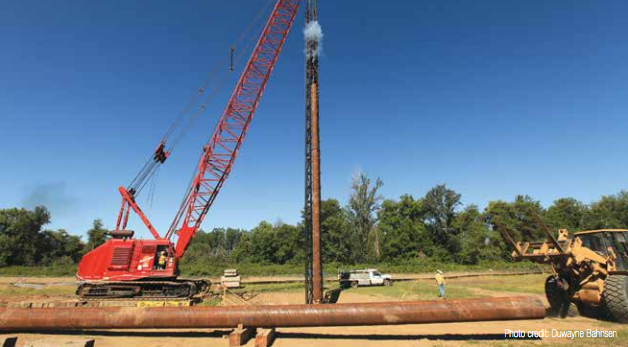Project News
Willits Bypass Breaks Ground

Flatiron broke ground on Willits Bypass in February, a momentous beginning to a long-awaited project.
“The California Department of Transportation website [for the project] has a photo from the 1950s of an engineer telling the town about the proposed bypass,” explains project manager Nick Reker, “so it’s a pretty big achievement just to get started.”
Flatiron, in a joint venture with DeSilva Gates, is constructing a new segment of Route 101 in California that will bypass the town of Willits in Mendocino County for Caltrans, aiding in relief of the congested traffic, delays and safety concerns that commuters experience on the main north-south route. Traffic becomes congested in this location in part due to the last five stoplights that exist on Route 101, which the project will eliminate.
The project includes constructing 5.9 miles of highway, two interchanges and 15 bridges, one of which is a 6,000-foot structure over a flood plain. This is only one source of the extensive environmental concerns on the project.
“Just about every square foot of the job is considered either a ‘water of the state’, or other environmentally sensitive area,” says Nick. Crews have to take special concern with their equipment to stay compliant—washing each piece carefully before using it on the job and rejecting any equipment that hasn’t been washed properly. Equipment, materials or waste products also can’t be stored within 150 feet of state waters.
According to Nick, tackling these environmental challenges is just a matter of good planning.
Taking cues from Flatiron’s successful safety programs, the project team employed new environmental processes in planning every operation. From creating an Environmental Hazard Analysis for better communication of environmental hazards to the pile driving crew, to integrating permit, wildlife and pollution concerns into the daily operations, environmental protection continues to be a top priority on the project.
Over the summer, the pile driving crew ramps up operations, having started production in two locations in July and driving 15-20 piles daily over the next few months. The project team also hopes to be able to move into foundation and substructure work during that time as well, although the wildlife in the area might have a say about it.
“With 250 active bird nests in the area, what we actually get to work on can be a little up in the air—pun intended,” jokes Nick. “But good planning will keep us moving forward.”
The project is scheduled to be complete in 2016.
